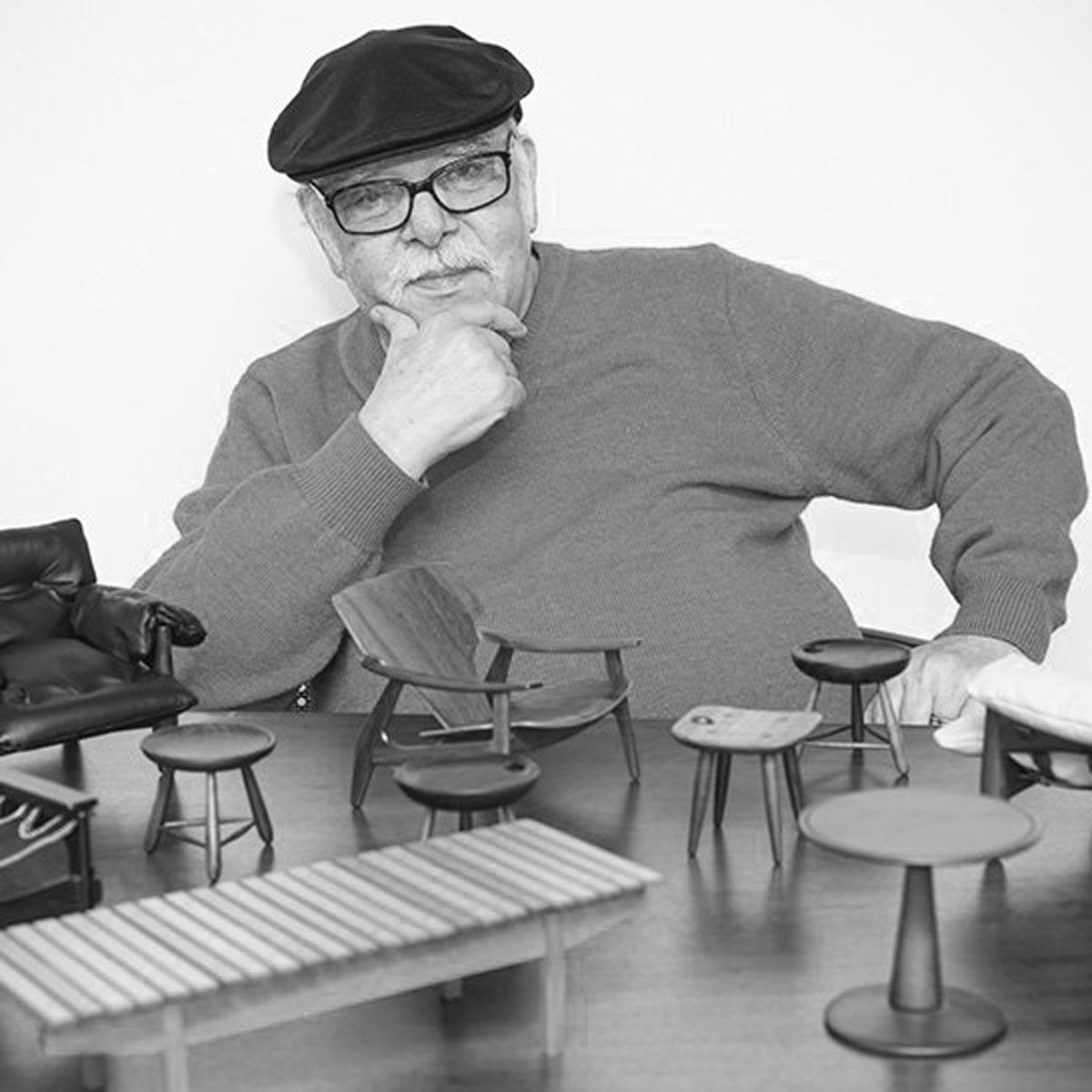Sergio Rodrigues
Like Joaquim Tenreiro, Sergio Rodrigues – born in Rio de Janeiro in 1927 – took part in the modernisation of his country while at the same time preserving a profoundly Brazilian identity. Today, both are seen as the founding fathers of modern Brazilian design. Rodrigues finished his architectural studies in 1952 and collaborated closely with the designer Carlo Hauner in his enterprise Artesanal in Curitiba in the south of Brazil. Shortly afterwards they were joined by Martin Eisler and together the three created the society Forma in São Paulo under the leadership of Sergio Rodrigues. The following year Rodrigues left as a result of aesthetic disagreements. Encouraged in his resolute modernity by artists like Lina Bo Bardi and Gregori Warchavchik, Rodriguez designed furniture with the broad ‘corpu- lent’ lines which for him summarized the Brazilian aesthetic and in this spirit opened the Galeria Oca at Rio de Janeiro in 1955 to cater for the growing demand for new furniture.
His idea was to produce furniture that was typically Brazilian, whether in design, material or concept, and to use traditional methods of construction. He saw this first gallery as much more than a simple furniture shop – rather it was to be an immersive experience allowing clients to see themselves in a total modern furniture environment.

Afficher la biographie complète
Mole, a chair designed by Rodrigues in 1957, is emblematic of this modern style, offering maximum comfort together with typically Brazilian, hammock-like construction. Poorly received at the time of his exhibition ‘Furniture as Art Object’ in 1958, his aesthetic became the basis for the avant-garde movement of the 1960s. Rodrigues received first prize for Mole at the international furniture competition at Cantu in Italy in 1961. In a parallel develop- ment, Rodrigues was commissioned by Oscar Niemeyer in 1957 to produce a furniture ensemble for the presidential palace of Brasilia and subsequently became responsible for the fitting out of build- ings in the new capital. Also at Niemeyer’s instigation, he took part in the furnishing of the head office of the publishing house Bloch in Rio de Janeiro in 1966 alongside Joaquim Tenreiro. Extremely prolific, Sergio Rodrigues left Oca after thirteen years in order to devote himself to architecture although he continued to design furniture pieces.
In 1975 Rodrigues received an award from the Brazilian architec- tural institute for his chair Kilin and for his entire œuvre. In 1988, recognized as one of the most important among Brazilian designers and architects, he received the Silver Pencil Award at the Architecture Biennale in Buenos Aires. An important retrospective was devoted to him in 1991 at the museum of modern art in Rio de Janeiro: Talking of Chairs.
Works
No Results Found
The page you requested could not be found. Try refining your search, or use the navigation above to locate the post.


